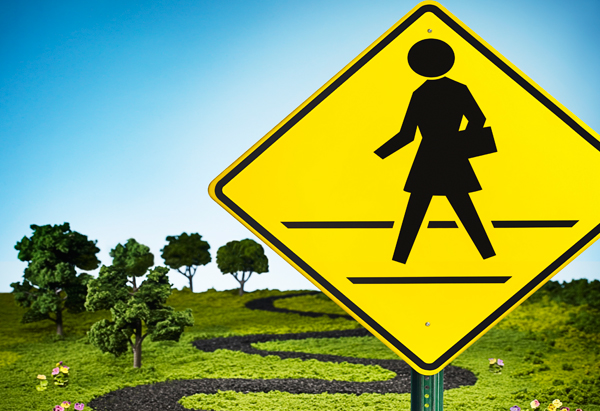How Long Will You Live? It Depends on How Fast You Walk
Good news for the fast paced: your gait can predict your longevity

Photo: Dan Saelinger
Forget the "life line" on your palm and complicated medical algorithms. It turns out that forecasting how long you'll live might be as simple as timing how fast you walk.
University of Pittsburgh researchers recently crunched data from nearly 35,000 subjects 65 years or older and discovered that each increase in gait speed of 0.1 meters/second correlated with a 12 percent decrease in the risk of death. Among women 75 to 84, for example, 92 percent of the fastest walkers (traveling at 1.4 meters/second or faster) lived another ten years, while only 35 percent of the slowest walkers (shuffling at 0.4 meters/second or slower) survived until then.
"The reason speed reflects vitality is that so many organs and systems are involved in how we move—the heart, the lungs, the muscles, the joints, the bones, the brain," says study author Stephanie Studenski, MD. She speculates that gait speed may one day be a low-tech way for physicians to assess their patients: A slow pace could indicate a deeper problem and inspire patients to improve modifiable health factors, like blood pressure, diet, and fitness.
1. Measure a distance of four meters on the floor and mark it with tape.
2. Time yourself as you walk at your natural pace between the start and finish lines, continuing a few steps after you've stopped the clock.
3. Divide your time in seconds by four meters.

More on Leading a Healthy Life
University of Pittsburgh researchers recently crunched data from nearly 35,000 subjects 65 years or older and discovered that each increase in gait speed of 0.1 meters/second correlated with a 12 percent decrease in the risk of death. Among women 75 to 84, for example, 92 percent of the fastest walkers (traveling at 1.4 meters/second or faster) lived another ten years, while only 35 percent of the slowest walkers (shuffling at 0.4 meters/second or slower) survived until then.
"The reason speed reflects vitality is that so many organs and systems are involved in how we move—the heart, the lungs, the muscles, the joints, the bones, the brain," says study author Stephanie Studenski, MD. She speculates that gait speed may one day be a low-tech way for physicians to assess their patients: A slow pace could indicate a deeper problem and inspire patients to improve modifiable health factors, like blood pressure, diet, and fitness.
The DIY Test
Studenski suggests measuring your gait once a year. Women over 65 can check their results against the graph below; women under 65 should compare their pace with past years (talk to your doctor if you see a sudden change).1. Measure a distance of four meters on the floor and mark it with tape.
2. Time yourself as you walk at your natural pace between the start and finish lines, continuing a few steps after you've stopped the clock.
3. Divide your time in seconds by four meters.

More on Leading a Healthy Life



